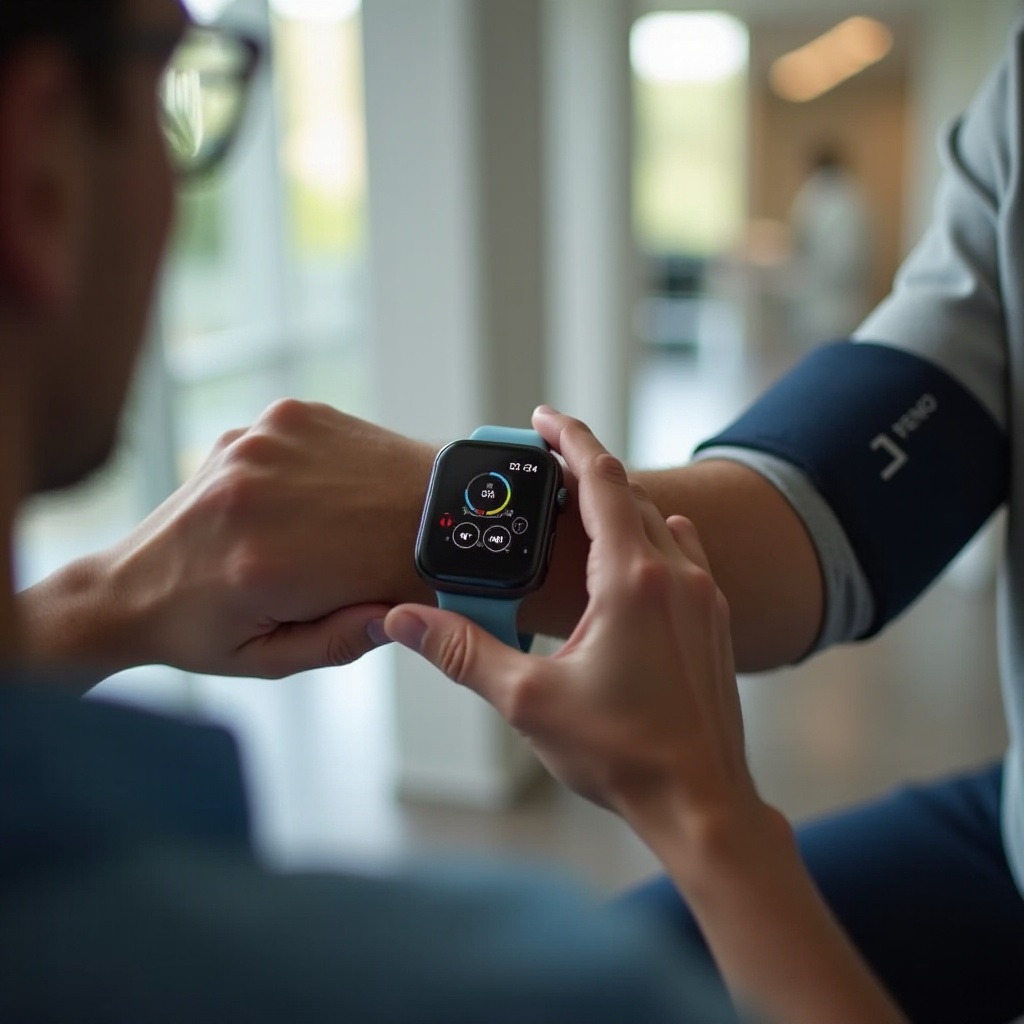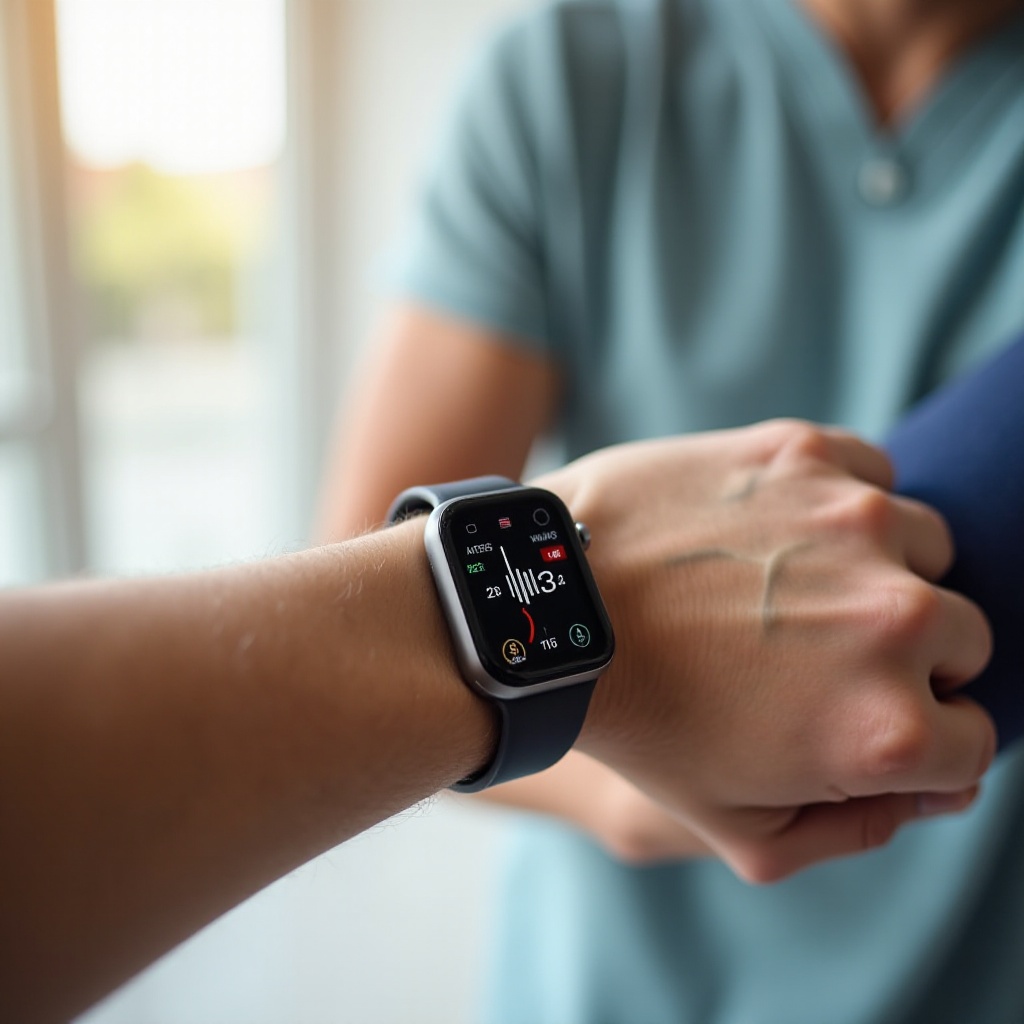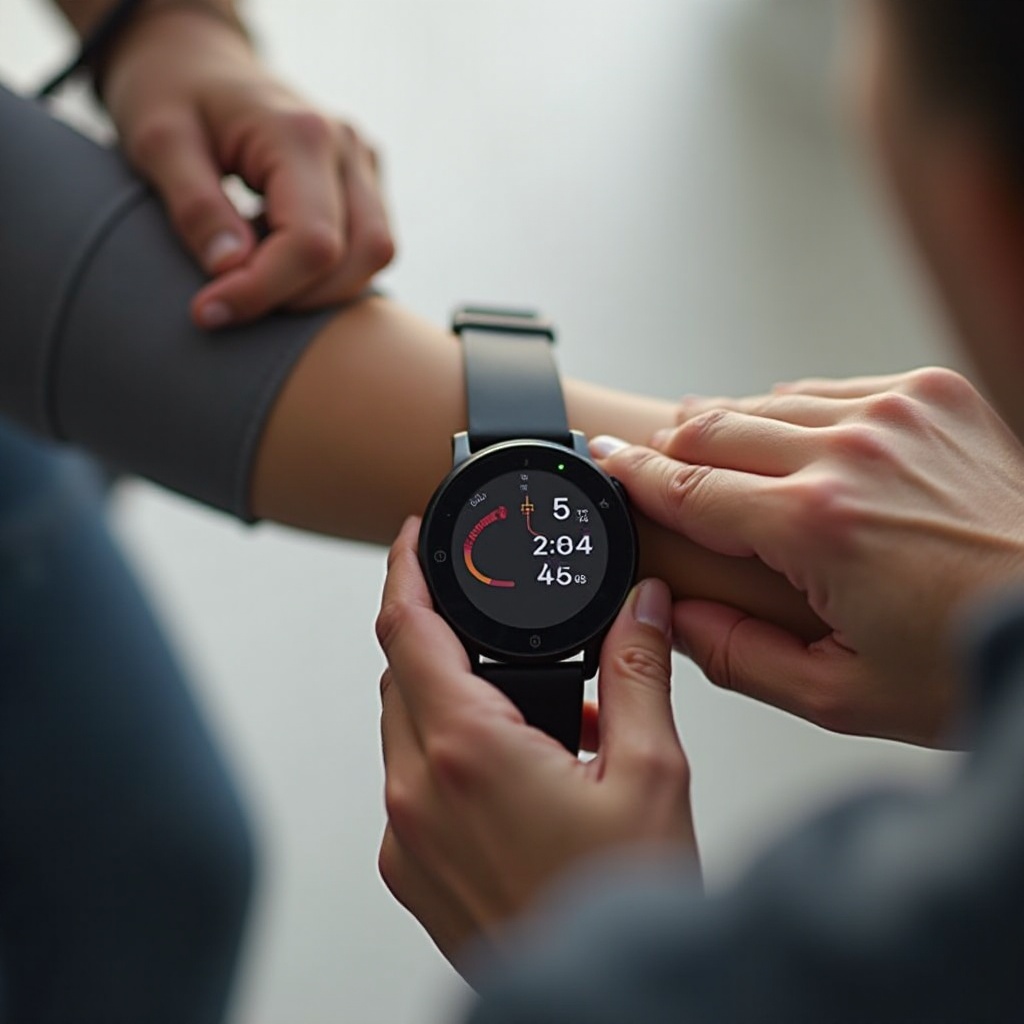Introduction
Smartwatches have become indispensable tools for health and wellness monitoring, thanks to their advanced features. Apart from tracking steps and heart rate, many smartwatches now offer blood pressure monitoring. This feature helps individuals keep an eye on their cardiovascular health in a convenient and non-intrusive way. In this blog, we will explore how to check blood pressure on a smartwatch, the top models with this capability, and the steps to ensure accurate readings.

Understanding Blood Pressure Monitoring on Smartwatches
Blood pressure is a critical health indicator that measures the force of blood against artery walls. It consists of two numbers: systolic pressure (the higher number) and diastolic pressure (the lower number). Smartwatches equipped with blood pressure monitoring utilize optical sensors and photoplethysmography (PPG) technology to estimate these values.
These devices use light to measure changes in the volume of your blood vessels, allowing the watch to calculate your blood pressure. While not as precise as traditional cuff-based devices, these smartwatches provide valuable insights into your health trends. It’s important to understand how they work to use them effectively.
Top Smartwatches with Blood Pressure Monitoring Capability
When it comes to blood pressure monitoring, not all smartwatches are created equal. Here are some of the top models that offer this feature:
1. Samsung Galaxy Watch 4
The Samsung Galaxy Watch 4 is known for its comprehensive health tracking. It includes advanced sensors capable of monitoring blood pressure, ECG, and even body composition.
2. Omron HeartGuide
Omron HeartGuide is a medical-grade smartwatch designed specifically for hypertension management. It combines traditional cuff technology with the convenience of a smartwatch.
3. ASUS Vivowatch BP
The ASUS Vivowatch BP uses both PPG and ECG sensors to deliver more accurate blood pressure readings. It also offers fitness tracking and stress monitoring features.
4. Yamay SW023
A more budget-friendly option, the Yamay SW023 provides basic blood pressure monitoring along with heart rate tracking, sleep analysis, and fitness features.
These smartwatches offer a range of functionalities that go beyond blood pressure monitoring, making them valuable tools for overall health and fitness management.
Step-by-Step Guide to Checking Blood Pressure on Your Smart Watch
Ready to start monitoring your blood pressure? Follow these steps to get started:
Initial setup: Pairing your smartwatch with your smartphone
- Download the App: Start by downloading the companion app for your smartwatch on your smartphone.
- Pair the Devices: Turn on Bluetooth on both devices and follow the pairing instructions. This typically involves selecting your smartwatch from a list of available devices and confirming the connection.
- Grant Permissions: Ensure that you grant the necessary permissions for the app to access your health data and notifications.
Calibrating the blood pressure monitor
- Use a Cuff-Based Monitor: Many smartwatches require calibration with a traditional blood pressure cuff. Take three consecutive readings with the cuff monitor.
- Enter the Data: Input these readings into the companion app to calibrate the smartwatch.
- Follow Calibration Frequency: Check how often the device needs recalibration, which can be weekly or monthly depending on the model.
Regular monitoring: How to take a measurement
- Wear the Watch Correctly: Ensure the watch is snug on your wrist, just above the wrist bone.
- Stay Still: Sit comfortably and rest your arm on a flat surface at heart level.
- Initiate the Measurement: Open the blood pressure monitoring section on your smartwatch and start the measurement process.
- Wait for Results: The watch will display your systolic and diastolic readings within a minute.
Interpreting the results
- Understand Normal Ranges: Normal blood pressure ranges between 90/60 mmHg and 120/80 mmHg.
- Look for Trends: Consistent readings outside this range may require medical attention.
- Consult Healthcare Providers: Use the data for discussions with your healthcare provider, especially if you notice any irregular patterns.
To ensure smooth and accurate tracking, remember to regularly calibrate your smartwatch and follow proper guidelines.

Accuracy and Limitations of Smartwatch Blood Pressure Monitors
While convenient, smartwatch blood pressure monitors are not without limitations. They use indirect methods to estimate blood pressure, which can lead to variability in readings. Factors like wrist position, movement, and calibration accuracy can affect results.
These monitors are best used for tracking trends over time rather than precise measurements. Regular calibration with a traditional device can improve accuracy. However, those with hypertension or cardiovascular conditions should not rely solely on smartwatch readings for critical health decisions.
Continuous monitoring with a smartwatch can provide insights into your everyday habits. However, ensure you consult healthcare professionals for accurate diagnosis and care.
Best Practices for Accurate Readings and Health Monitoring
To ensure that you get the most accurate readings from your smartwatch, follow these best practices:
- Consistency is Key: Take your blood pressure at the same time each day under similar conditions.
- Proper Fit: Ensure your smartwatch fits snugly but comfortably, and wear it correctly on your wrist.
- Calibration: Regularly calibrate the device with a traditional blood pressure monitor.
- Stay Still: Remain seated and avoid talking or moving during measurements.
- Questionable Readings: If you get an unexpected reading, wait a few minutes and retake the measurement to confirm.
By adhering to these practices, you can improve the accuracy of your smartwatch readings and gain valuable insights into your health trends.

Conclusion
Smartwatches with blood pressure monitoring capabilities offer a convenient way to keep track of your cardiovascular health. While these devices provide valuable insights, it’s essential to understand their limitations and use them as part of a broader health management strategy. Regular calibration, proper usage, and consultation with healthcare professionals can maximize the utility of these advanced wearable devices.
Frequently Asked Questions
How accurate are smartwatch blood pressure monitors?
Smartwatch blood pressure monitors offer a general trend of your blood pressure but are less accurate than traditional cuffs. They should be used as complementary tools rather than sole measuring devices.
Can I rely solely on a smartwatch for my blood pressure readings?
No, it’s not advisable to rely solely on smartwatch readings. Always confirm with a traditional blood pressure monitor and consult healthcare professionals for medical advice.
Which smartwatch is the best for monitoring blood pressure?
The best smartwatch for blood pressure monitoring varies depending on your needs. The Samsung Galaxy Watch 4, Omron HeartGuide, and ASUS Vivowatch BP are highly recommended for their accuracy and additional health features.

